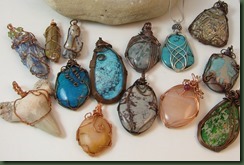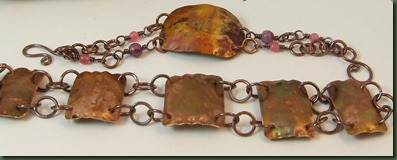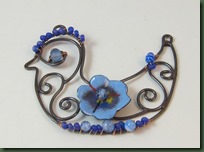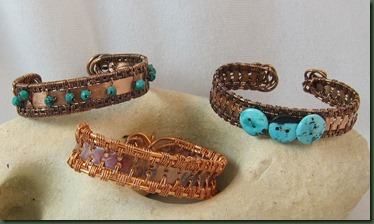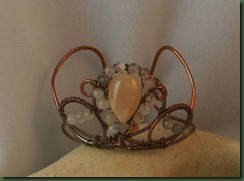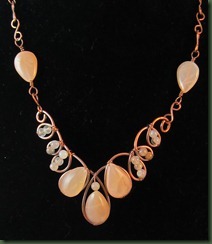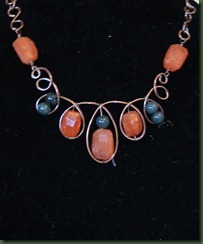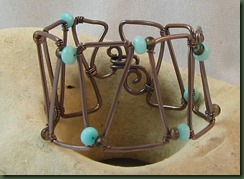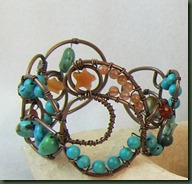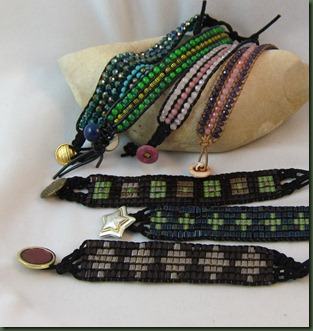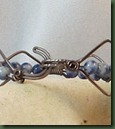Have you ever been enthralled with a design in a book, magazine or online tutorial, rushed to make it and flopped? I have. I used to get disgusted and think “surely there’s something wrong with the pattern.” Yet, you know that’s probably just a personal excuse. It doesn’t help at all when a friend says she tried it and it turned out great.
When I read a tutorial, I tend to jump right in and attempt to make the piece whether I have the specified supplies or not. I’ve even failed at making something from a tutorial that I wrote. Here’s a case of that.

I have a new bracelet tutorial in my etsy shop( https://www.etsy.com/listing/103694934/wire-and-beads-diamond-bracelet-tutorial) . I’ve made the bracelet time and time again and know it is correctly written. Alas, the other day, I tried it with a different size beads and flopped. I only changed one variable and, of course, it changed the dimensions on the circumference of the piece. Rather than using the 4 or 5 mm beads I suggest on the tutorial, I just grabbed a pretty gemstone and used it. Unfortunately, the pretty amethyst had a diameter of about 12mm. Using it on the bracelet caused the piece to stick out farther on my arm and made it too short. I needed to alter the bracelet wire length to accommodate for the larger beads. The bracelet below shows the correct bead size for the wire length.

This is only one example of how variables change an outcome. I might have used a different gauge of wire or different style hook and these, too, would have changed the end product.
Variables effect everything we do. Did you ever say something perfectly kind to a family member only to have that person bark back at you in an angry voice? It’s possible that the person just had an unpleasant encounter with someone else and you received the outgrowth of that situation. Perhaps that person has a headache . . . ? I’m sure it wasn’t YOUR fault. I know it’s never MY fault . . . ha!
Driving up a hill at my normal quick speed takes a nasty change with the weather varies and the road surface is wet. I guess I should slow down.
The point here is to be aware that variable are ever in the way of perfection. Consider the variable before initiating an action. How might the variable change the outcome or product? Plan for this change.
The other more positive side of variables can result it happy happenstances. I can use a different gauge wire and sometimes the jewelry piece gets better or has a new pleasing look. In the aforementioned person to person encounter, recognizing the variable/current temperament of the person you speak to might allow you use different words or just steer clear of the person.
So, the question of “what did I do wrong” should come prior to initiating a project. Rephrasing it to ask ‘how will the change in this variable effect my outcome and how can I adjust for it?” might help us all get more pleasing results. I think I’m going to try the last question.
There’s no way to get rid of variables in jewelry making or in life. We should just expect them and know that outcomes are often altered when a variable changes.
I’m wishing you variables that result in good things.





